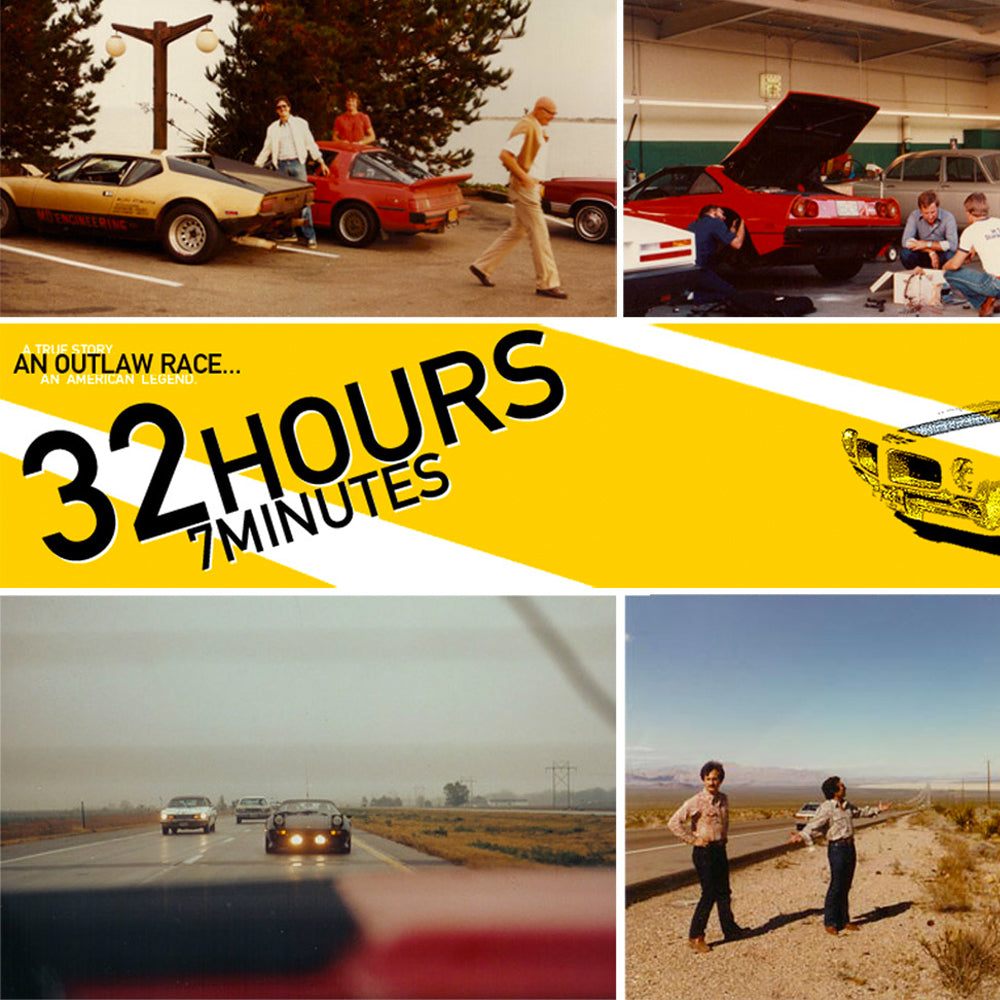
In 1933, Erwin George "Cannonball" Baker drove a Graham-Paige model 57 Blue Streak 8 across the country and averaged over fifty mph. He set a 53 hour 30 minute record crossing the country that stood for nearly 40 years. Starting in 1971, the Cannonball Baker Sea-To-Shining-Sea Memorial Trophy Dash named in his honor, also known to many as the Cannonball Run (and of course also made into a movie series starring Burt Reynolds, and a host of other early 80's movie stars) was a completely unofficial, unsanctioned, and illegal coast to coast race memorializing that feat and also in stout defiance of the newly instituted national 55mph speed limit. The Cannonball Run was the brainchild Brock Yates, of Car and Driver fame, and the idea was that participants would drive coast-to-coast, across the USA as fast they could…and of course try not to get caught.
The Cannonball Run was staged five times between 1971 until Yates ended it in 1979 because of growing safety concerns. It was resurrected as the U.S. Express by different organizers as a similar race across the country. When the final U.S. Express was run in 1983, participants David Diem and Doug Turner claimed to have crossed the country in 32 hours, seven minutes in their Ferrari 308. That record seemed destined to stand for all time until filmmaker Cory Welles, whose family was close to Turner, set about proving if the record was indeed possible.
In the film 32 Hours 7 Minutes, Welles rides along in the backseat of a well-used 2000 BMW M5 (the famous and for many beloved E39 body style) piloted by Alex Roy and David Maher, participants of several Gumball 3000 and Bullrun 'rally' style races, to see if the record was achievable. When setting the record in 1983, Diem and Turner’s Ferrari 308 would’ve had to average well over 80 M.P.H.
Any stop whatsoever brings down the average, so more than a few people were skeptical in 1983 when the duo claimed such a low record time. Not to mention that their Ferrari was stock. The 1983 Ferrari, while it looked fast, was saddled with a 240 horsepower engine, and 0-60 mph was in the neighborhood of 7-seconds. Quick for the time, but you can again see why people might not have believed it.
The first part of 32 Hours 7 Minutes is pure documentary set-up to explain why we're here and the ride we're about to go on. We learn about the early history of the event from participants that took part in the races back in the ‘70s and ‘80s. It's great stuff and fascinating to see the wild characters, clothes, and cars (even a motorcycle!) that ran in the early races.
Welles later connects with Roy and Maher who are both game to see if the record can be broken. With much reconnaissance work done and the BMW M5 kitted out with so many electronic gadgets (not including Welles' equipment that was needed for filming) that one would think that the Bimmer’s fuse box would melt, the trio set off from New York City to the Santa Monica Pier in California. In spite of also using aerial recon and lead and chase cars along the way, things don't always go to plan making for more than a few exhilarating and high-drama moments. And one gets to experience all of this, the most interesting part of the film, vicariously, through one's TV screen, with no risk of getting a speeding ticket!
Whether the trio break the record is almost beside the point. Movies about racing and cars are hard to get right. However, with more editing more focus could have been brought. Instead of almost an hour of set-up, it may have been more interesting to see more about the preparation, the car, and what makes these drivers 'tick', something gone into more depth in Alex Roy's own book, The Driver: My Dangerous Pursuit of Speed and Truth in the Outlaw Racing World. 32 Hours 7 Minutes is far from perfect, but it is compelling.
As a postscript to this documentary, a team piloting a 2004 Mercedes CL55 AMG claimed to have broken the transcontinental record in 2013, in 28 hours and 50 minutes, averaging 98 miles per hour. That's an average of almost 100 mph!
To buy the DVD, click here.




















































